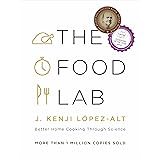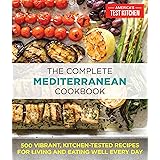Mastering English vocabulary can present challenges. One such area often overlooked is the diverse world of nuts. The accompanying video offers an excellent visual and auditory guide to common nut names.
This article builds upon that foundation. We will explore each nut in greater detail. Our focus includes their unique characteristics and varied uses. You will gain a deeper understanding of this important food group.
Understanding Nuts Vocabulary
The English language categorizes many items as “nuts.” Some are botanically true nuts. Others are seeds or legumes. Nonetheless, all are valuable for both nutrition and cuisine.
Almond
Almonds are botanically seeds. They come from the fruit of the almond tree. These versatile nuts are widely consumed. California produces over 80% of the world’s supply. Almonds are rich in Vitamin E. They also provide significant magnesium. These nuts are excellent for heart health. They help lower LDL cholesterol levels. Almonds are used in many forms. These include milk, flour, butter, and snacks.
Cashew
Cashews possess a distinct kidney shape. They grow on the cashew apple. Originating from Brazil, cashews are now globally cultivated. They offer a sweet, creamy flavor. Cashews are excellent sources of copper. They also contain beneficial monounsaturated fats. Consequently, cascashews support bone health and energy production. These nuts feature in sauces, dairy-free alternatives, and snack mixes.
Walnut
Walnuts resemble a small brain. This appearance hints at their known benefits. They are particularly rich in Omega-3 fatty acids. These fats are crucial for brain function. Walnuts also contain powerful antioxidants. Studies suggest regular walnut consumption improves cognitive health. They are popular in baking. Walnuts also enhance salads and savory dishes.
Hazelnut
Hazelnuts are also called filberts. They boast a sweet, earthy flavor. Hazelnuts are famously paired with chocolate. They are a primary ingredient in popular spreads. This nut is a good source of dietary fiber. Furthermore, it provides Vitamin E and B vitamins. Hazelnuts contribute to healthy skin and a strong immune system. They are often roasted. Hazelnuts are also used in confectionery.
Pistachio
Pistachios are easily recognizable. Their vibrant green color is distinctive. They often come in partially opened shells. Originating from the Middle East, pistachios are ancient nuts. They are packed with antioxidants. These compounds protect cells from damage. Pistachios are beneficial for eye health. They feature prominently in desserts like baklava. Pistachios also add flavor to savory dishes.
Peanut
Peanuts are botanically legumes. They grow underground, unlike tree nuts. Despite this, they are widely considered nuts in culinary terms. Peanuts are an excellent source of plant-based protein. They contain healthy fats and fiber. However, peanuts are a common allergen. Peanut allergies affect a significant portion of the population. They are consumed as snacks. Peanuts also form the base of peanut butter.
Pecan
Pecans are native to North America. They have a rich, buttery flavor. This makes them a favorite in desserts. Pecan pie is a classic American dish. These nuts are high in antioxidants. They also contain healthy monounsaturated fats. Consequently, pecans contribute to heart health. They can be enjoyed raw. Pecans are also excellent in baked goods.
Corn Nut
Corn nuts are not botanical nuts. They are fried or roasted corn kernels. These are primarily a crunchy snack food. They offer a satisfying texture. While tasty, their nutritional profile differs significantly. They contain less protein and fiber than true nuts. Corn nuts are a popular crunchy addition to snack mixes.
Brazil Nut
Brazil nuts are large and triangular. They grow in pods in the Amazon rainforest. These nuts are exceptionally rich in selenium. Just one or two Brazil nuts provide the daily recommended intake. Selenium is a powerful antioxidant. It supports thyroid function. It also boosts the immune system. However, excessive consumption should be avoided. High selenium intake can be toxic.
Beyond the Basics: Nutritional Benefits of Nuts
Nuts offer substantial health advantages. They are dense in nutrients. These include healthy fats and protein. Nuts also provide essential vitamins and minerals.
Moreover, regular nut consumption is linked to better health outcomes. A study published in the New England Journal of Medicine indicated a 20% lower mortality rate among daily nut consumers. Nuts significantly contribute to cardiovascular health. They help reduce bad cholesterol levels.
Furthermore, nuts are excellent sources of dietary fiber. Fiber aids digestion. It helps maintain a healthy weight. Approximately 1 ounce of mixed nuts provides 3-5 grams of fiber. This can fulfill a significant portion of daily requirements.
Culinary Versatility: Cooking with Nuts
Nuts transcend simple snacking. Their varied textures and flavors enrich countless dishes. They feature in both sweet and savory recipes. Their uses are truly global.
In baking, ground nuts add moisture and flavor. Almond flour is a popular gluten-free alternative. Chopped walnuts and pecans elevate cakes and cookies. Moreover, nuts provide a satisfying crunch. They are often sprinkled on salads and stir-fries. Pesto, for instance, traditionally uses pine nuts or walnuts.
Nut butters are another versatile option. They serve as spreads, cooking ingredients, and thickeners. Cashew cream replaces dairy in many vegan recipes. Brazil nuts can be grated over dishes for a cheesy flavor. Consequently, exploring nuts expands culinary possibilities.
Important Considerations: Nut Allergies
While beneficial, nuts require caution for some. Nut allergies are among the most common food allergies. They can trigger severe reactions. This includes anaphylaxis. Therefore, awareness is crucial.
Tree nut allergies affect 1-2% of the global population. Peanut allergies are also prevalent. Individuals with such allergies must strictly avoid nuts. Food labeling is vital for safety. Always check ingredient lists carefully. If unsure, err on the side of caution. Prompt medical attention is necessary for allergic reactions.
Indeed, understanding nuts vocabulary is more than just naming ingredients. It opens doors to appreciating their nutritional value. It also enhances culinary exploration. Furthermore, it promotes safety for those with allergies. Continuing to explore types of nuts will enrich your daily life.











